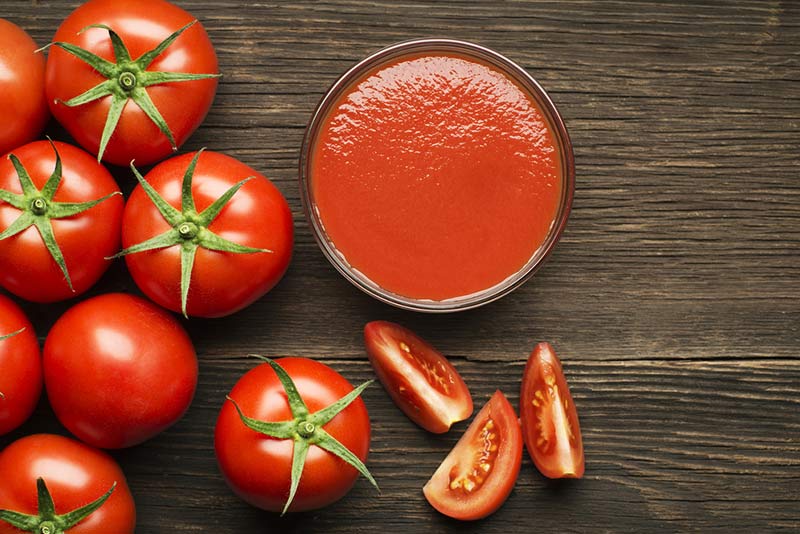How many Calories are in a tomato: Nutrition and facts

As we are all aware fruits and vegetables have some of the highest nutrition value of all foods and therefore are an essential part of our daily diet if we want to look after our health or lose weight and shed fat. Tomatoes are one of the most used food products, especially in salads and sauces.
In this article we tell you all about this beautiful, red, vitamin packed food: how many calories tomatoes contain, their vitamin content, varieties of tomatoes and of course the benefits to our health when we eat this delicious food.
How many calories does a tomato have?
It is always helpful to know how many calories a tomato contains, especially if you are starting a new diet or are simple watching your weight. For every 100 grams of tomato, there are approximately 18 calories, varying on the type of course. This means that it is a food with a low calorie content yet relatively high in nutrition, and that you can eat tomatoes quite happily for breakfast, lunch, lunch and dinner if you wish.
The average weight of a tomato varies between 150 and 300 grams. This means you can eat up to three tomatoes a day and not reach 100 calories.
Most of the weight of natural tomatoes is water, 94.5% in fact, and they are one of the foods high in nutrition as they are rich in vitamins and fibre. Including tomatoes in your diet is a great way to meet the recommended 5 daily portions of fruit and vegetables. There are many types of tomatoes and dishes to use them in from tomato salads to pasta sauces and casseroles without getting repetitive.
 Does tomato make you fat?
Does tomato make you fat?
Since this food is so low in calories, the answer is "NO". Tomatoes are not fattening. They are food that can be part of your regular meals without any problem and you can enjoy the many benefits they bring. Of course in preprepared sauces products there are likely to be additives so it is better to eat tomatoes in their raw or natural form. This also ensure maximum vitamin and nutrition value since most fruit and vegetables have more benefits for our bodies in their raw state.
Can fried tomatoes make you gain weight?
Fried tomato is different and it can lead to weight gain, especially if eaten in excess. As we have said, this food is low in calories, but once you start to add oil the calories can begin to double or triple.
A natural tomato sauce that is then fried will have around 30 calories per 100 grams, while those manufactured that are bought in the supermarket can exceed 70 calories per 100 grams.
 Types of tomato and their nutritional value.
Types of tomato and their nutritional value.
Tomatoes are rich in vitamin A, C, K, and minerals such as iron and potassium. They are a natural antioxidant and are therefore a great ally for healthy skin. They have numerous benefits with just a few being that they improve vision and prevent degenerative eye diseases, improve blood circulation and promote cardiovascular health, prevent constipation and are a natural diuretic.
These are just some of the most important health benefits, so it is always great to incorporate into your diet on a daily basis
There are many varieties of tomato, and to give you a general overview, we will mention the most common types below.
- Kumato tomato: also known as black tomato due to its dark colour. It is highly valued for its tasty and valued pulp, as well as its rich flavour.
- Pear Tomato: also known as Roman tomato. It is bight red and has a pear-like shape and is sweeter and smoother than other varieties. It has many close variants too: Canary tomato, Breton, Alboran, among others.
- Cherry Tomatoes: Of Aztec origin, these bright, rich red coloured tomatoes are very aromatic and the size of a cherry. They are the best for salads and again there are many variations: pear cherry, round cherry and yellow cherry among others.
- Smooth round tomato: These tomatoes have many different names worldwide. Its skin is quite tough, but it is very fleshy and has few seeds. Its flavour is acidic and they are widely used in foods internationally.
- Moruno Tomato: This type is fleshy, juicy, with fine and firm skin, it has very few seeds and its flavour is sweet with just a little acid.
- Tags: Lifestyle



